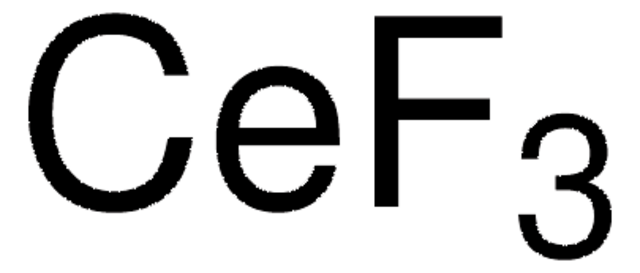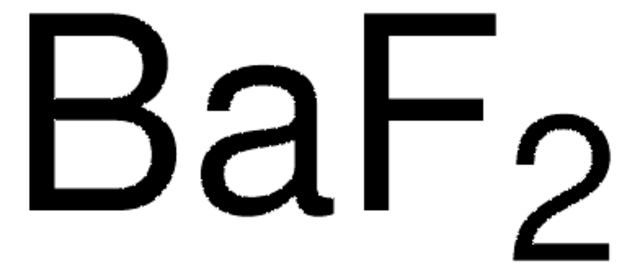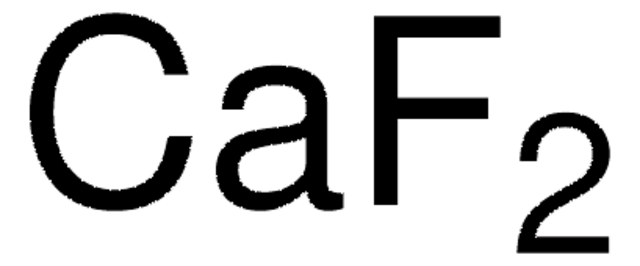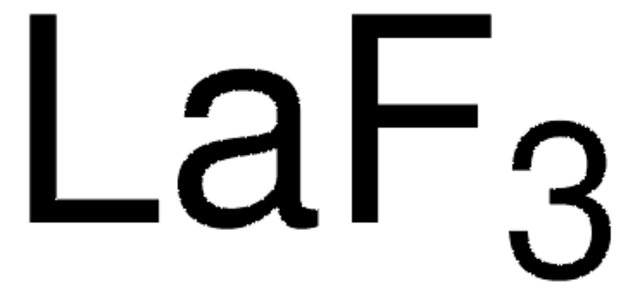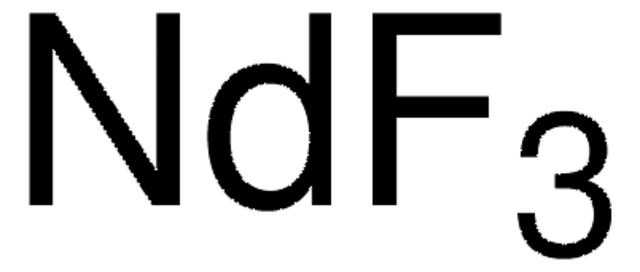Kluczowe dokumenty
450030
Strontium fluoride
anhydrous, powder, 99.9% trace metals basis
Synonim(y):
Strontium difluoride
About This Item
Polecane produkty
klasa czystości
anhydrous
Poziom jakości
Próba
99.9% trace metals basis
Formularz
powder
zanieczyszczenia
≤1500.0 ppm Trace Metal Analysis
bp
2489 °C (lit.)
mp
>1400 °C (lit.)
gęstość
4.24 g/mL at 25 °C (lit.)
ciąg SMILES
F[Sr]F
InChI
1S/2FH.Sr/h2*1H;/q;;+2/p-2
Klucz InChI
FVRNDBHWWSPNOM-UHFFFAOYSA-L
Szukasz podobnych produktów? Odwiedź Przewodnik dotyczący porównywania produktów
Powiązane kategorie
Opis ogólny
Zastosowanie
- To produce an ultra-thin layer on the ZnO electron transport layer in inverted polymer solar cells. SrF2 thin layer enhances electron extraction efficiency and reduces carrier recombination loss, remarkably improving photovoltaic performance.
- To prepare a highly luminescent Ce3+-doped SrF2 nanophosphor for dye-sensitized solar cells. These nanophosphors help to enhance light harvesting and power conversion efficiencies.
- To fabricate non-toxic and dopant-free electron-selective contact for silicon solar cells. This contact has exceptional stability and thickness tolerance.
Kod klasy składowania
11 - Combustible Solids
Klasa zagrożenia wodnego (WGK)
WGK 2
Temperatura zapłonu (°F)
Not applicable
Temperatura zapłonu (°C)
Not applicable
Środki ochrony indywidualnej
dust mask type N95 (US), Eyeshields, Gloves
Wybierz jedną z najnowszych wersji:
Masz już ten produkt?
Dokumenty związane z niedawno zakupionymi produktami zostały zamieszczone w Bibliotece dokumentów.
Produkty
Spectral conversion for solar cells is an emerging concept in the field of photovoltaics, and it has the potential to increase significantly the efficiency of solar cells. Lanthanide ions are ideal candidates for spectral conversion, due to their high luminescence efficiencies and rich energy level structure that allows for great flexibility in the upconversion and downconversion of photons in a wide spectral region (NIR-VIS-UV).
Nasz zespół naukowców ma doświadczenie we wszystkich obszarach badań, w tym w naukach przyrodniczych, materiałoznawstwie, syntezie chemicznej, chromatografii, analityce i wielu innych dziedzinach.
Skontaktuj się z zespołem ds. pomocy technicznej